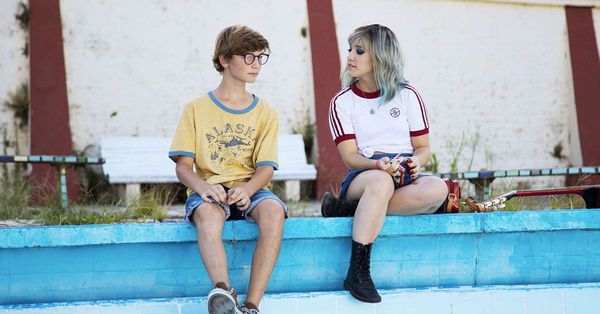 |
| A Trip To The Moon |
Sometimes when you’e struggling to communicate with your family and get them to understand what you’re going though, a journey into space is what it takes to resolve matters. That’s the approach taken by Tomás (Ángelo Mutti Spinetta), the lonely young hero of Joaquín Cambre’s magical realist film A Trip To The Moon. Having won a good bit of praise on the festival circuit, it’s now being released theatrically in the UK. Taking a break from shooting music videos in New York, the Argentinian director told me why telling this story mattered to him so much.
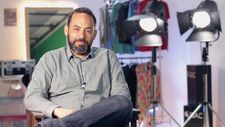 |
| Joaquín Cambre |
“I actually really don’t know how I came up with this idea,” he admits. “I think I always wanted to do a coming of age film because at that particular age was when I decided to be a film director so it’s like a plot point in my life. So I wanted to show the emotions and feelings of that particular age in some story more interesting than min.” He laughs. “It’s really not autobiographical. I’m not a fan of the Moon but I really think that 13 or 14 years are always ages that define you as a person.”
Young Tomás is quite an outsider. Was that part of his experience?
“Not really – I had very good friends. I was not a popular kid but I had a passion for film and in that particular subject I felt very alone because I was so young and I had an adult interest... So I felt lonely in that subject.”
Was he making films from an early age?
“Yeah!” he says.
He has a lot of short films and music videos to his name, but this is his first feature. Was it moe difficult to prepare for?
 |
| Family time |
“It was. I also think,” he says with a self-effacing grin, “I am a little bit old for making my first feature film. I’ve been filmining for like 20 years, different things, mostly music videos... This is the first time that it came, an idea, from out of nothing, and that was a story I really had to tell. I felt that way,” he says firmly.
It’s a film with a lot of smaller stories within it, given that its hero has a big family and evrybody within it is doing their own thing.
“There were satellites of that big story that is his [Tomás’] love story,” Joaquín says. “So those stories I really tell from the point of view of the kid.” This, he explains, means the viewer can’t be certain how real they are. “The kid is the key. I really don’t care so much for this family. I want to show how he feels inside of this family or these friendships etc. Almost 100% of the time, you are watching Tomás, so you are always looking through his eyes. That’s what I like and what I wanted to tell.”
Was it difficult to find an actor who could fill that role and handle being in almost every scene?
“Yeah, it was very hard. We had, like, four or five months of casting. I was rehearsing and working with several kids and I found five that wre okay... I started working with all these five kids to pick one, but then when I pick two or three, Tomás comes to the studio and he has a brother. His name is Ángelo, the actor, and Benicio is the brother. They both came on the last day of call back. They are the grandsons of a very important musician in Argentina. So I cast both and both were brilliant – much better than the others. So I had to pick between these two guys and when I saw Ángelo it was amazing. All the people in the casting were crying – he did a great audition. He really nailed it.
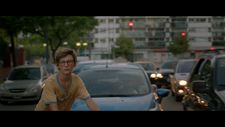 |
| Tomás (Ángelo Mutti Spinetta) rides his bike around the city |
“The other two young actors in there are Checho [Luca Tedesco], his friend – he was challenging. This was the first time he acted in any kind of situation. He was a young acting student so it was very challenging.” Luca and Ángelo did not get along very well, he explains. “On the other hand we have Ángela [Torres], the girl who he falls in love with, who is a very well known actress in Argentina. She’s great, she’s a singer, and she got along very well with Ángelo and they became friends.”
How did he approach giving the film its distinctive look?
“I was very obsessive about showing this outsider character through outside locations. The film was shot, mostly, near Buenos Aires, but I want people in Argentina and Benos Aires to say ‘Where is that? I don’t know that place.’ Because I always try to show it as if we are outside of the city. Streets are empty, not crowded, buildings in the background... the city is in the background. I mean, one of the main locations is an empty pool, you know? All is under construction, never wll constructed or finished. That was my aesthetic.”
I note that there’s one scene where Tomás is confronted by a bully. There are buildings all around him and he looks as if e feels trapped. He seems more elaxed in open spaces.
“Yeah, exactly. He’s, like, in a narrow place. He’s not in his home, he’s not outside, he’s in this limbo... So not only the location there, which is a real location that is used also when he broke up with his very good friend Checho and Checho is angry. it’s the same location, the same feeling. It’s a place where he’s not comfortable. And also the sound in that scene is very... very, uh... You know, I don’t know how to say in English."
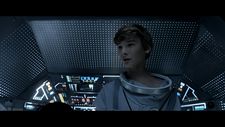 |
| Tomás takes off |
I suggest that he say it in Spanish, and he laughs.
“You know, I don’t even know how to say it in Spanish, that’s the problem!” He pauses to think for a moment. “The sound is getting into his head, you know? It’s terrifying. We tried to use all of the background sound. We have a lot of parrots there naturally – we couldn’t take off those parrots from the soundtrack – so we intensified the parrots, we made them louder so that they could go into Tomás’ head.”
We discuss the scenes that he had most fun filming.
“I think maybe the one I felt very empowered to make was the spaceship scene. It really opened my mind as a director [working out] how to film this scene. The film was filmed in four weeks so the first three weeks were all the other locations, not the spaceship. The last four days of filming I had to do in a studio, another environment. I started to film with the actors and the photography and everything all set and I realised that I wasn’t having the feeling I needed for that moment.
“I really needed to get into Tomás’ mind so Leticia [Brédice], the actress wh plays the mother of Tomás, told me ‘Why don’t you grab the camera yourself?’ I always love to use the camera handheld. In my music videos I used to do it. So I realised that it was a momnt to sare with the actors – only me and the actors. For those three or fours days other people were outside the set and it was me and the actors.
“It was a very hot environment. I was all sweaty, and the actors too. It felt real. I feel very happy about that shooting mode.”
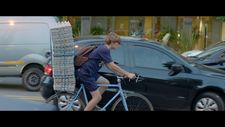 |
| Preparing to build a spaceship |
Did he expect the film to do as well as it did at festivals?
“When I did this film I really felt that I had to do it. I didn’t know why. I’m still trying to find out why I did this film... Of course it’s always refreshing and nice to hear good things about your film, so that’s amazing. I know that I’m very happy with some scenes and I know I did it well. Like the party scene when they are dancing, and some spaceship scenes I really like too.”
He’s now working with a writer on the scripts for two further features.
“One is a very independent, small film, only three actors in a small place. It’s emotional, it’s a psychological thriller.And then I’m writing another, more comic and commercial one that also has a little bit of craziness.”
A Trip To The Moon is in UK cinemas from Friday 22 March.





















